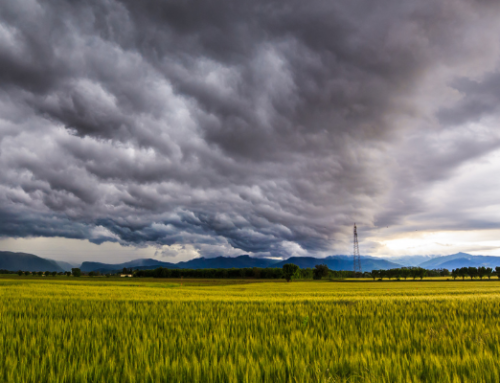We have experienced changeable weather this year. Winter saw storms Dudley, Eunice and Franklin hit our shores, whilst the Met Office is suggesting that May 2022 was the 5th warmest on record by mean temperature, with England experiencing 89% of its annual rainfall.
Such unpredictable and extreme weather prompts the recurring question, whether this will be a year where insurers see an overall increase in the number of subsidence claims reported to them. We will likely know the answer to this question in early August.
The Association of British Insurers (ABI) data showing the number of domestic subsidence claims notified across the industry in 2020 totalled 18,000. In 2021, this fell to 15,000 claims due to the summer in the South East of England being much wetter and less sunny than average. This contrasts with 2018, when 23,000 domestic subsidence claims were notified.
Interestingly, in a typical year, 60% of valid subsidence claims will be due to root induced clay shrinkage. 18% will be due to leaking drains/mains water supply pipe. 18% will be due to poor ground, infill and consolidation issues, whilst the remaining 4% will be due to other causes such as heave, landslip, sinkholes or mining issues.
What is Subsidence?
Subsidence is the downward movement of the ground beneath the building other than by settlement. Settlement being downward movement as a result of the soil being compressed by the weight of the buildings within ten years of construction.
Subsidence can occur when the ground contracts when moisture within it is lost. This is likely to be because of a lengthy period of dry weather combined with high temperatures. The issue can be exacerbated where there are nearby trees and other vegetation which will also take up substantial amounts of water from the ground during this period.
Subsidence can also occur because of other factors such as a leaking drain, which can cause softening of clay soils, or the washing away of a sandy soil. Earlier mining activities, decomposition of peat, or a change to a groundwater course may also lead to subsidence.
Regardless of the cause, as the foundations of the property move downwards, this adds strain to the structure of the property and cracks appear, usually diagonal in nature and close to windows and doors or near to extensions. Other indicators can be windows and doors starting to ‘stick’ or rucking of wallpaper. Subsidence cracks are usually mirrored internally and externally and are normally found in concentrated areas.
Cracks are widest towards the roof of the property and narrow towards ground level.
It’s all in the soil…
MORECS (Meteorological Office Rainfall and Evaporation Calculation System) is a useful guide for those monitoring soil performance and data from grid square 161 (below) in North London shows us exactly this. The soil in this area comprises of London Clay, a type which is prone to swelling and shrinking depending upon the weather experienced.
Data suggests that up until recently we were following a similar trajectory to that of 2018, which was a surge event year. Earlier rainfall combined with recent spells of drier weather has caused the trajectory to alter yet again. The next six weeks will be key weatherwise, in determining whether insurers see an uplift in clay related subsidence claims.
Due to the prevalence of clay soil, the South East of England is more prone to subsidence movement than the rest of the UK, due to a combination of the geology and a tendency for a warmer drier climate. Looking forward, climate change means more properties beyond the South East could be at risk if global warming drives hotter, drier summers.
That said, just because a property sits in this high-risk area it does not mean that it will necessarily suffer damage. It is possible in such locations that the pattern of movement is uniform across the buildings footprint and does not lead to any subsidence damage.
Therefore, insurers continue to closely monitor this region and the UK, both for industry developments and our own experience, as we move through the summer months.
The Claims process
Customer’s perception may be that subsidence claims are a long and drawn-out process and expensive for insurers, although in most cases, neither of these are true. If the cause of the movement, such as a small tree is quickly identified and removed at an early stage, the property should stabilise. This may mean that only crack repairs and redecoration are required to restore the property to its pre incident condition. In such a case the claim can be concluded within a few months and without the need to monitor the property for signs of ongoing movement.
What is Zurich’s data telling us?
Their data shows that there was a 3% increase in overall claim volumes reported in 2021 compared with 2020. Interestingly though, this year (January – May), Zurich have seen claim volumes 36% lower when compared with 2021, which is believed that it may be due in part to a very wet February.
Very few claims remain open from 2018 and 2020, but where they are, Zurich is seeing the expected cost of settlement increase. This can be explained by the very nature of these claims, involving third party vegetation. In most cases, properties will need to be monitored to evidence the fact that the third-party vegetation is influencing the property before the third-party owner will take any action. There is the additional cost of monitoring itself, along with further costs associated with underpinning of the property if the offending vegetation is not removed, or its influence reduced.
Although not specific to subsidence, but claims in general, Zurich is also seeing the cost of repairs increase due to the availability of some building materials, such as concrete combined with factors affecting the labour market too.
Avoiding Subsidence – Advice for customers
Zurich recommend that trees and shrubs are not planted too close to a property and sometimes this information is contained in the guidance which comes when purchasing trees. Vegetation already in place should be managed and the advice of an Arborculturalist / tree surgeon sought where appropriate.
Conduct regular general maintenance, including fixing leaking drains, clearing debris from gutters and prune trees and shrubs.
Most importantly, do not panic! Cracking can occur in a property for reasons not related to subsidence such as thermal movement, lintel failure or roof spread – where there is insufficient restraint within a roof structure. The resulting horizontal thrust from the weight of the roof covering can cause outward movement at the head of supporting walls. This can occur when old, lighter roof coverings are replaced with heavier modern equivalents.
Wall tie corrosion – where ties in cavity walls can rust and expand over time causing horizontal cracking in external walls.
In conclusion, it is too early to say with any certainty whether this will be a notable year for subsidence. The Met Office three-month prediction for June, July and August suggests a “higher chance of a hot summer compared to normal”, although “temperatures near average are still the most likely outcome”. “Impacts from heatwaves are more likely than usual”, along with a “reduction in the chance of a wet summer compared to normal”.
We are here to help.
If you are concerned about how this affects you and your business and would like support in assessing your needs, we are here to help. Please do get in touch for confidential advice and guidance.
This article was adapted from an article by Zurich which can be found here.





